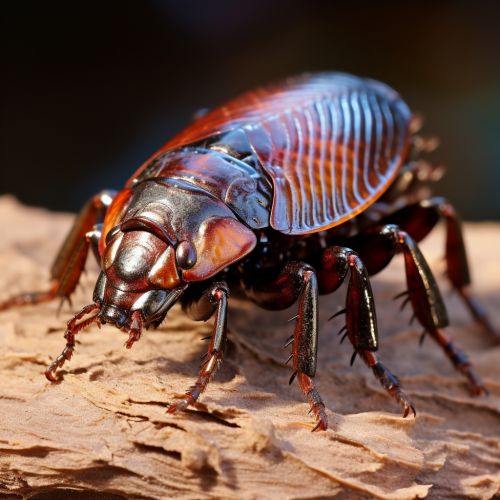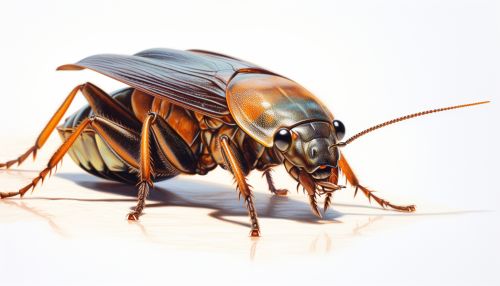Cockroach
Introduction
The cockroach is a member of the order Blattodea, which includes some of the most common and widespread insects in the world. They are characterized by a flattened body, a small head with large compound eyes, and long, flexible antennae. Cockroaches are known for their remarkable resilience and adaptability, which have allowed them to inhabit a wide range of environments across the globe.


Biology and Anatomy
Cockroaches exhibit a variety of physical characteristics that contribute to their survival and proliferation. Their flattened bodies allow them to squeeze into small cracks and crevices, providing them with shelter and protection from predators. The exoskeleton of a cockroach is composed of a tough material called chitin, which provides structural support and protection.
Cockroaches possess a pair of large compound eyes, which provide a wide field of vision and allow them to detect movement from all directions. Their long, flexible antennae serve multiple functions, including touch, taste, and smell, which are crucial for foraging and communication.
The mouthparts of a cockroach are of the chewing type, which allows them to consume a wide variety of organic materials. Their digestive system is highly efficient, capable of extracting nutrients from a wide range of food sources, including materials that are typically considered non-nutritive by other organisms.
Life Cycle and Reproduction
The life cycle of a cockroach begins with the female laying a protective case known as an ootheca, which contains multiple eggs. The number of eggs within an ootheca varies among species, but can range from a few dozen to over a hundred. The ootheca is typically deposited in a safe location, and the eggs within develop into nymphs.
Nymphs resemble smaller versions of adult cockroaches, but lack wings and reproductive organs. They undergo a series of molts, shedding their exoskeleton and growing larger with each stage. The final molt reveals the adult form, complete with wings and reproductive organs.
Cockroaches exhibit a reproductive strategy known as oviparity, where the eggs develop outside the mother's body. However, some species exhibit a form of live birth known as ovoviviparity, where the eggs develop within the ootheca inside the mother's body until they are ready to hatch.
Behavior and Ecology
Cockroaches are primarily nocturnal, hiding during the day and emerging at night to forage for food. They are omnivorous, consuming a wide range of organic materials, including plant matter, decaying organic matter, and even other insects. Some species have adapted to living in close association with humans, exploiting the abundant food sources and shelter provided by human dwellings.
Cockroaches exhibit a variety of behaviors related to survival and reproduction. They are known for their rapid and erratic movements, which can aid in evading predators. Some species also produce defensive secretions that deter predators.
Cockroaches play a significant role in ecosystems as decomposers, breaking down organic matter and recycling nutrients back into the soil. However, their association with human dwellings can lead to them being viewed as pests, due to their potential to spread disease and cause allergic reactions.
Cockroaches and Humans
Cockroaches have a long history of association with humans, often as unwelcome houseguests. They are considered pests due to their potential to spread disease-causing organisms, trigger allergic reactions, and cause damage to property.
Despite their negative reputation, cockroaches have been used in various cultures for medicinal purposes. In traditional Chinese medicine, for example, cockroaches are used in the treatment of a variety of ailments.
In recent years, cockroaches have also been used in scientific research, particularly in the fields of entomology, neuroscience, and robotics. Their hardy nature and simple yet effective nervous system make them ideal subjects for a variety of experiments.
